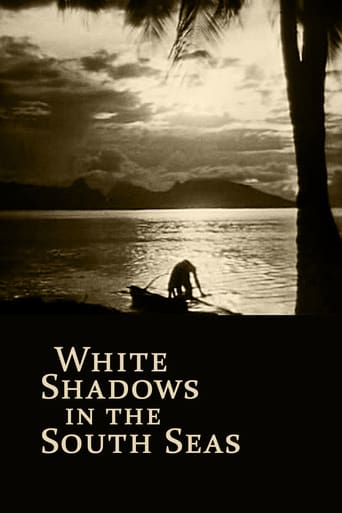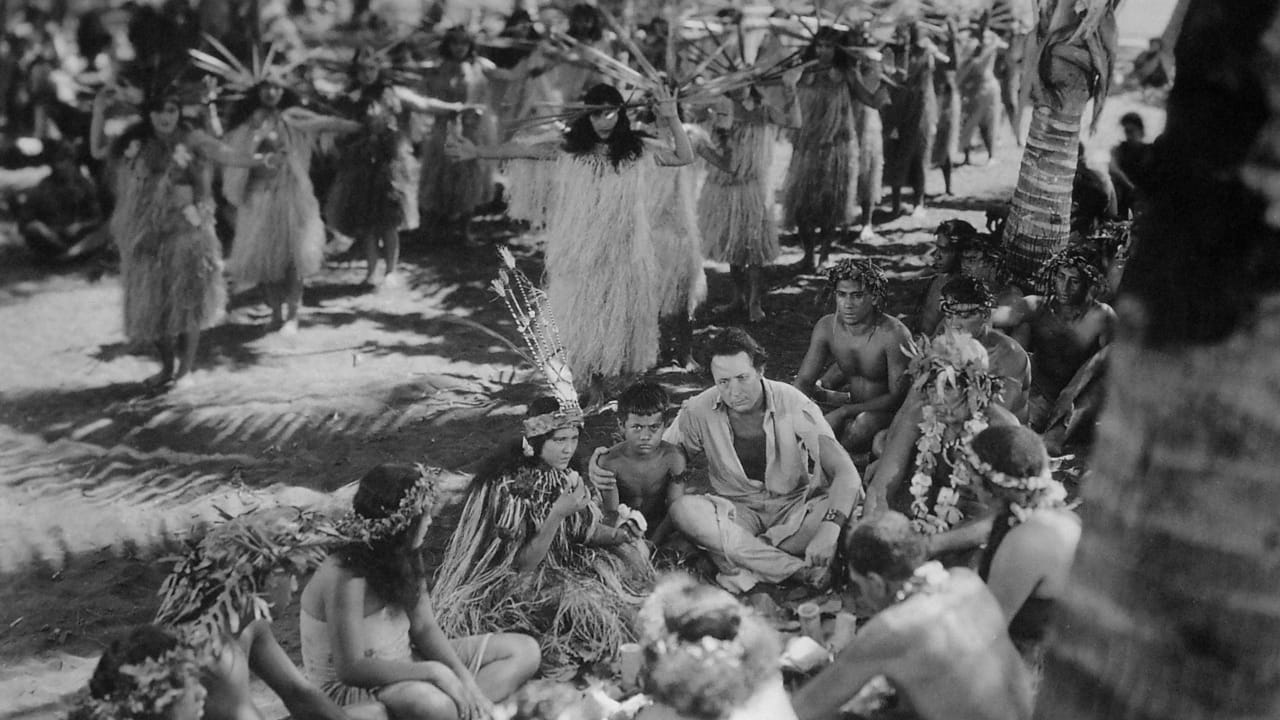kekseksa
MGM did this film no favour by promoting it as their first "sound" film. Given the obsession with "sound" that dominated the US cinema industry in 1928 this meant that all criticism of the film tended to concentrate on whether it ws or was not a genuine "sound" film - which quite evidently it was not. It has a musical score by William Axt intermingled with a few sound effects but, since such orchestral scores were already common in major cinemas during the late silent era, only the degree of synchronisation (the first work of MGM sound recordist Douglas Shearer) represented any kind of innovation.And the value of the film is not of course there at all but lies, as with any other good silent film, in the strong script and excellent cinematography by Clyde de Vinna (who received the Oscar and would work on all Van Dyke's "exotic" films of the next few years - The Pagan, Trader Horn, The Eskimo) and Bob Roberts who has worked with Flaherty on Moana (1926) and would go on rather surprisingly to become one of the principal cinematographers in the flourishing Argentinian film industry.Normally speaking this film ought to represent everything that I tend to find crass and mediocre in US film. It is a producer's and cutter's film par excellence, chosen by Irving Thalberg himself and directed by the notorious "one-shot Woody"; Robert Flaherty who was initially to have directed was sacked for working too slowly.Yet I have to admit this seems to me in some ways the classic US film at its best before the influence of "sound" has become fully felt. It may not have been shot as it claims in the Marquesas but was nevertheless made on location in Tahiti and the cinematography is not in the least studio-bound nor overly preoccupied with continuity or glamorous "star"-focus. It makes use of local non-professional actors and actors and gives a dignified and not altogether paradisal picture of traditional island life. Even without the influence of Flaherty, the film is "too slow" for at least one other commentator, that is to say, probably just about right for any non-US audience. To my mind, it is not the "documentary" aspects of the film one would like to see curtailed but rather the tiresome and over-sentimental love-scenes (to please Thalberg's philistine colleague Stromberg), complete with a bit of "whistling" (to assuage the sound-buffs), which are quite the weakest feature of the film.Then, politically, as other reviewers have already remarked, it is a strong and unambiguous condemnation of colonial exploitation. In this respect there were two different trends in the US take on traditional cultures - the "progressist" notion on the one hand that they were picturesque but desperately and cruelly harsh (the view favored by Flaherty in Nanook or in The Man of Arran) and the "nostalgic" view of such cultures as "paradisial" (curiously also associated, almost by accident, with Flaherty who had been unable to find anything sufficiently gruesome on Samoa and had to be satisfied with reviving a defunct practice of painful body-tattooing for his 1926 film Moana). As a result Moana had been sold as an "idyll" and contributed to the development of a US "tiki" culture dominated by ideas of the "lost paradise" and "the noble savage".Probably this film, like Murnau's later Taboo, gained from the departure of Flaherty whose politics were always inclined to favour rather than condemn the "civilising mission". Thalberg and Van Dyke have strongly taken the opposite view while not exaggerating the notion of "paradise" either. In other words, they have successfully steered a course between two false myths (that of primitives saved by civilisation from the harsh savagery, on the one hand and that of a paradisal idyll on the other). Here, whether originally paradisal or not, we are shown a world that is victim to a genuinely savage exploitation by the dreg-end of colonialism (as in the stories of Joseph Conrad) but the contrast shown (very clearly in the parallel scenes of diving and in the more heavily allegorical opposition between pearls and fish-hooks), is not, despite a bit of false rhetoric, so much between a paradise and a hell but rather, quite simply and correctly, between a good and bad use of natural resources and between decent and indecent value-systems. In the later scenes the story turns totally to moral parable (the corrupting "white shadow" that develops in the hero himself), but, shorn of the more "mystical" elements of the original book, it remains on the whole a reasonably realistic representation, excellently played and excellently shot. The ending, which I shall not reveal although it is I some ways the most unusual feature of the film, is powerful where it could so easily have been facile. The film holds up well , as another reviewer remarks, beside Murnau's 1931 Tabu and compares very favourably indeed with King Vidor's 1932 The Bird of Paradise (a muddle of all conceivable myths and.a falsely glamorous star-vehicle).The same cannot be said for the marketing of the film which was a model of tasteless exploitation with Sid Grauman's "prologue" to the film at the Chinese Theater, "The Tropics", involving an extravagant array of "tiki" singing and dancing. All the same, that "white shadow"' past ad the film shown, the stars were also present to talk afterwards about their experience in making it.
kidboots
Late in 1927, Irving Thalberg decided to shoot an epic adventure film and he selected "White Shadows in the South Seas". Robert Flaherty, a famed documentary maker, was selected to direct. Thalberg had been very impressed with his "Moana" of 1926. W.S. Van Dyke was named as assistant director, he had mainly worked on westerns, but in years to come with films such as "Trader Horn" (1931) and "The Thin Man" (1934) etc he earned a reputation as a stylish but fast director who always got films finished on time. Almost immediately, Flaherty found the studio schedule too binding and walked out - W.S. Van Dyke carried on. With the involvement of both Flaherty and Van Dyke, the movie has the best of both worlds - the magnificent documentary style of photography combined with an imaginative, stirring story.Filmed in Tahiti, even though the opening credits claim it was shot on location in the Marquesas Islands with "authentic" islanders, it tells the story of white shadows in the South Seas - the shadow white men cast over the beautiful, untouched Polynesian Islands. Dr. Matthew Lloyd (Monte Blue) a "derelict of the islands", is an alcoholic and despairs of the way white men have cheated, robbed and exploited the trusting natives. He makes an enemy of Sebastian (Robert Anderson), an evil trader, who manages to get Lloyd on to a plague ridden boat, which, during a typhoon, is ship wrecked on another uncharted island. Island life is filmed in a golden glow - absolutely dazzling. The scenes of natives diving for pearls, preparing the feast and doing ceremonial dances have a documentary feel to them (Flaherty's influence) and are a glorious panorama of a lost time. When Lloyd rescues the chief's young son from drowning the island people make him a God. Eventually he also succumbs to the "instinct of his ruthless race - Greed!!" He finds a cast off pearl and starts to dive for them. When Fayaway (beautiful Raquel Torres) finds him lighting a fire to attract passing ships, her sadness and pleading convinces him he has been a fool. More white shadows come with a boatful of traders (the evil Sebastian among them) who intend to open a store and send the natives diving for pearls. The ending is confronting and not at all like I thought it would be - it creates a very sad and somber finish to a beautiful, thoughtful film.Monte Blue had been a rugged leading man throughout the twenties - this was probably his best remembered film. Raquel Torres, a beautiful Mexican actress made her debut as Fayaway, but unfortunately, in the handful of films she made, she was usually cast as island girls with names like Raquella, Pepita and "hula dancer".Highly, Highly Recommended.
Michael Morrison
Woody Van Dyke was a prolific director, with many well-loved and classic movies helmed by him. "White Shadows in the South Seas" is one of his best, showing a mastery of camera use and a skill in leading his cast.Monte Blue was, likewise, a very prolific actor, but his lead role here has to be one of his best, and one of his best performances. He was very affecting, very touching, and even handled the pre-Yakima Canutt fight scenes well.There is a realism to this movie that caught my attention, even though I am very familiar with the silent genre, having been, for example, a regular for years at the old Silent Movie Theatre in Los Angeles when it was run by the great John Hampton.As others have commented here, the beauty of the location joined with the quality of the acting and directing make this masterpiece a cinematic experience, and I urge everyone to grab any opportunity to watch it.
dougdoepke
Thanks are due to TMC for reviving this antique for contemporary audiences. The film deserves rediscovery. With its exotic setting and simple morality tale, the fable achieves considerable power. Especially memorable is the very last scene with the artfully posed Tiki god emblematic of what has been lost. Also, note the briefness of that final revealing sequence showing how the native culture has been corrupted. Once the traders prevail, it's almost painful to see these innocents replaced with dangling cigarettes, laboring children, and commercialized dancing. Though kept brief, the stark contrast took nerve on the part of filmmakers who risked backlash from audiences unused to seeing Western impact in a negative light. For rarely do we see the effects of colonial expansion portrayed in such touching terms. Sure, some of the movie's romance scenes are overlong, while others are plain hokey. But the underlying theme of paradise lost remains as affecting now as it was then.Not to excuse the ruthless tradersbut when the simple native economy is replaced by the Western commodity economy, an historical dilemma is posed. On one hand, we regret the loss of the simple, idyllic innocence so powerfully portrayed in the trusting people and natural abundance of the tropical isle. However, that idyllic existence is also a static existence, with no motive for science, knowledge, or development, at least as the Western world understands them. Whatever their greedy motives, the traders do represent the possibilities of dynamic Western culture. Put simply and starkly, the contrasting choice is between a culture of comfortable inertia or one of developmental challenge. The appeal of each is something to think about. Anyway, I'm not sure which I would choose, but after a long week's work, I think I'm with the doctor.


 AD
AD

